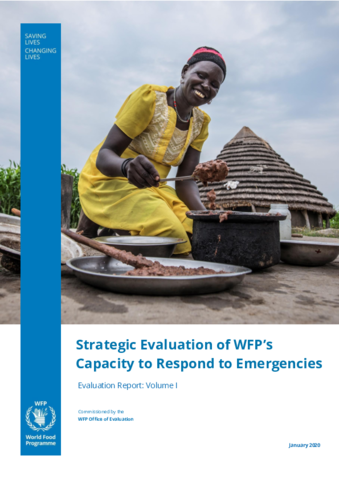
This strategic evaluation covers the full range of emergencies WFP responds to from preparedness, immediate response and longer-term response through to exit. The evaluation is organized around the contribution that WFP capacity makes to the quality of its emergency responses. It considers WFP capacities at three interdependent levels - the enabling environment, the organization and the individual.
The evaluation concluded that:
- WFP has increased its capacity to respond to the increased number and scale of emergency responses over the past decade. However, capacities notably at the individual level are over-stretched.
- WFP has invested in surge mechanisms, training and duty of care for employees with some success. But constraints to developing and sustaining access to needed expertise across emergency contexts and phases of responses risk undermining the quality of emergency responses.
- WFP has developed capacity to deal with the growing complexity of emergency responses and to respond to external trends. However, the lack of an organization-wide emergency response framework constrains linked-up planning for the development of WFP capacities.
- When confronting competing priorities, WFP consistently prioritizes efficiency and coverage. More attention needs to be paid to other aspects of preparedness to make sure responses remain relevant.
- WFP’s contribution to sector-wide responses is highly valued and contributes to inter-agency efficiency and better coverage. Evolving roles and UN reform mean that new guidance and clarification will be needed.
- Limitations in WFP corporate monitoring frameworks and systems constrain oversight of the effectiveness of its responses. Effective learning platforms are also lacking.

